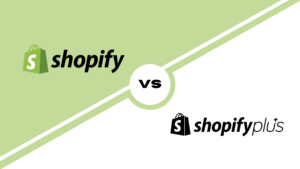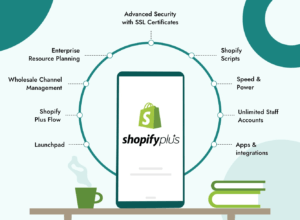Bundling is the practice of packaging two or more products or services together, offering them as a single value proposition to customers.
With bundling, businesses can create unique offerings that provide customers with added convenience, value, and personalization. They can also balance their overall profitability while offering competitive pricing that attracts customers.
In this guide, we’ll explore the different types of bundling strategies and how businesses can effectively implement them to ignite their ecommerce sales and maximize customer value.
Understanding Bundling
Bundling is a powerful strategy in ecommerce that involves packaging two or more products or services together and offering them as a single value proposition to customers.
This approach allows businesses to create unique offerings that provide customers with added convenience, value, and personalization.
In the world of ecommerce, bundling plays a crucial role in driving sales and maximizing customer value.
By combining products or services into bundles, businesses can attract customer attention, increase average order value, and ultimately boost revenue.
Now, let’s explore the different types of bundling strategies that businesses can utilize:
- Product Bundles: This type of bundling involves combining related products into a single bundle. For example, a tech retailer could bundle a laptop, a laptop bag, and a wireless mouse together, offering customers a complete package. Product bundles can increase customer satisfaction by providing them with everything they need in one purchase.
- Cross-Sell Bundles: Cross-sell bundles are created by combining complementary products that are frequently purchased together. For instance, a skincare brand could bundle a face wash, a moisturizer, and a sunscreen, addressing different skincare needs and encouraging customers to purchase more items.
- Add-On Bundles: Add-on bundles involve offering additional products or services at a discounted price when customers purchase a core product. This strategy encourages customers to add more items to their cart, increasing the overall order value. For example, a home appliance retailer could offer a discounted blender or toaster when customers buy a kitchen mixer.
- Customizable Bundles: Customizable bundles are designed to cater to individual customer preferences. Businesses provide a selection of products or services and allow customers to choose which ones they want to include in their bundle. This personalization adds a sense of choice and tailor-made experience, enhancing customer satisfaction.
Boosting Sales with Bundling
Bundling is an effective way for businesses to increase their sales and drive revenue growth. One of the key benefits of bundling is that it can increase your average order value.

By offering a bundle that includes multiple products or services at a discounted price, customers are more likely to opt for the value proposition and purchase more items than they might otherwise.
Beyond the financial benefits, there is also a psychological appeal that bundles hold for customers. Bundles tap into the customer’s desire to feel like they are getting a good deal, increasing their satisfaction and comfort in their purchase decisions.
Bundles provide customers with a sense of convenience and ease, as they can find everything they need in a single transaction and not have to think about making multiple separate purchases.
This psychological appeal is supported by studies that show customers are more likely to buy a bundle than individual products, even when the total price of the bundle is higher than what they would pay for individual items.
This is because the perceived value of the bundle often feels greater than the sum of its parts.

By understanding the psychology behind the appeal of bundles, businesses can create more effective bundling strategies that maximize customer value and drive sales.
Bundling can be an especially powerful tool in ecommerce, offering customers the convenience and value they are looking for while boosting your business’s bottom line.
In the next section, we’ll explore some best practices for implementing bundling strategies effectively to drive sales and customer loyalty in your ecommerce business.
Leveraging Bundling for Customer Loyalty
Bundling is not only a powerful sales strategy but also a tool that can greatly enhance the overall customer experience.
When implemented effectively, bundles provide customers with added convenience, value, and personalization, leading to higher customer satisfaction and increased loyalty.
One way bundles enhance the customer experience is by offering a complete solution to their needs. By packaging related products or services together, businesses can alleviate the hassle of finding and purchasing individual items separately.
Customers appreciate the convenience of being able to fulfill multiple needs with a single transaction, saving them time and effort. Moreover, bundles create value beyond the sum of their parts. When customers see that they can get more for their money through a bundle, they feel a sense of excitement and satisfaction.
This feeling of receiving a good deal further enhances their overall experience and increases their perception of value.
Studies have shown that customers tend to be more satisfied with their purchase when buying a bundle than buying individual products. This satisfaction stems from the convenience, value, and customization of bundles.
Not only does bundling enhance customer satisfaction, but it also plays a crucial role in customer retention. When customers have a positive experience with a bundle, they are more likely to continue purchasing from the same business in the future.

Bundling helps businesses foster long-term relationships by tailoring bundles based on customer preferences or previous purchase history, showing that the business understands their needs and values their loyalty.
By leveraging bundling strategies effectively, businesses can not only boost sales but also cultivate customer loyalty. Bundles enhance the customer experience by providing convenience, value, and personalization. They contribute to higher customer satisfaction levels, ultimately leading to increased customer retention and advocacy.
Implementing Effective Bundling Strategies
Creating compelling bundles is key to driving sales and increasing customer satisfaction. To help you implement effective bundling strategies, here are some actionable tips:
- Understand your customer’s needs: Research and analyze your target audience to gain insights into their preferences and pain points. By understanding their needs, you can create bundles that address their specific challenges and provide value.
- Offer complementary products or services: Select items that are related or complementary to each other. Bundling products that work well together enhances the customer experience and increases the perceived value of the bundle.
- Provide customization options: Give customers the ability to customize their bundles based on their preferences. This can be done by offering different product variants or allowing customers to choose the combination of products that best suits their needs.
- Clearly communicate the benefits: Highlight the benefits of purchasing the bundle over buying individual items. Clearly communicate the value proposition, such as cost savings, convenience, or exclusive features, to encourage customers to choose the bundle.
- Create tiered pricing options: Offer bundles at different price points to cater to different customer segments. This allows customers with varying budgets to find a bundle that suits their needs and price range.
- Test and iterate: Continuously monitor the performance of your bundles and gather customer feedback. Use this data to refine your bundling strategies and make adjustments to better align with your target audience’s preferences.
To align bundling with your target audience and their preferences:
- Segment your target audience: Divide your customer base into smaller segments based on demographic, geographic, or psychographic characteristics. This allows you to tailor your bundles to specific customer groups with unique preferences.
- Conduct market research: Use surveys, focus groups, or customer interviews to gather direct feedback on the types of products or services your target audience is interested in bundling. This research will help you understand what appeals to them and ensure your bundles resonate with their preferences.
- Analyze customer data: Utilize customer data, such as purchase history, browsing behavior, and preferences, to gain insights into what products or services are frequently bought together. This data-driven approach will enable you to create bundles that align closely with their preferences.
- Stay updated on industry trends: Keep an eye on trends and developments in your industry to identify emerging customer preferences. By staying ahead of the curve, you can create bundles that cater to the evolving needs and desires of your target audience.
Remember, effective bundling is all about understanding your customers and delivering value. By following these tips and aligning your bundling strategies with your target audience’s preferences, you can create compelling bundles that drive sales and customer loyalty.
To learn more about how Mapplinks can help you implement effective bundling strategies and optimize your email marketing efforts, contact us today. Our team of experts is ready to assist you in maximizing the potential of your business.
Case Studies and Success Stories
Real-world examples of businesses successfully implementing bundling strategies can offer valuable insights and illustrate the benefits of bundling. Here are some examples:

- Apple Music: Apple offers a bundle of its music streaming service with other Apple services, such as iCloud and Apple TV+, at a discounted price. This bundling strategy encourages customers to purchase multiple services at once while also providing convenience and cost savings. The key takeaway is that bundling can enhance customer loyalty by offering a complete solution for all their needs.
- McDonald’s: McDonald’s often bundles their products in limited-time promotions, such as meal deals that offer a burger, fries, and a drink. This strategy encourages customers to purchase a full meal, rather than just a single item, and increases the perceived value of the bundle. The key takeaway is that bundling can drive sales by making it more convenient and cost-effective for customers to purchase multiple items.
- Amazon Prime: Amazon bundles several services, including free shipping, streaming video, and music services, into a single subscription package known as Amazon Prime. This bundling strategy provides significant value to customers while also encouraging them to stay with the Amazon ecosystem. The key takeaway is that bundling can foster long-term customer loyalty by creating a comprehensive solution that addresses all their needs.
From these case studies, we can glean several key takeaways:
- Bundling provides convenience and cost savings for customers by offering a complete solution for all their needs.
- Bundling can drive sales by making it more convenient and cost-effective for customers to purchase multiple items.
- Bundling can foster long-term customer loyalty by addressing all their needs and creating a comprehensive solution.
- Understanding customer needs and preferences is critical to creating compelling bundles that resonate with their desires.
- Continuously monitoring and adjusting bundling strategies based on customer feedback and data can lead to improved performance and optimized results.
By leveraging these key takeaways, businesses can implement effective bundling strategies that enhance customer satisfaction and drive long-term loyalty.
To learn more about how Mapplinks can help you implement successful bundling strategies and optimize your email marketing efforts, contact us today. Our team of experts is ready to assist you in maximizing the potential of your business.
Conclusion
Bundling is a powerful strategy that brings numerous benefits to ecommerce businesses. By offering customers a combination of products or services at a discounted price, businesses can drive sales and foster customer loyalty.
Strategic bundling provides several advantages. Firstly, it enhances the customer experience by offering convenience and cost savings. Customers appreciate having a comprehensive solution that meets their needs in one go.
Secondly, bundling increases the perceived value of the products or services being offered, making it more enticing for customers to make a purchase. They see the bundle as a better deal compared to buying items individually.
Moreover, bundling plays a crucial role in cultivating customer loyalty. By creating bundles that address their specific needs and preferences, businesses can demonstrate that they understand and value their customers. This leads to increased trust and long-term loyalty.
To maximize the potential of bundling for your ecommerce business, it is essential to implement strategic bundling strategies. This involves understanding your target audience, selecting complementary products or services, clearly communicating the benefits, and continuously refining your approach based on customer feedback and data.
If you are looking to elevate your ecommerce sales through bundling, contact us today. Our team of experts can help you develop and implement effective bundling strategies that drive sales and increase customer loyalty.



